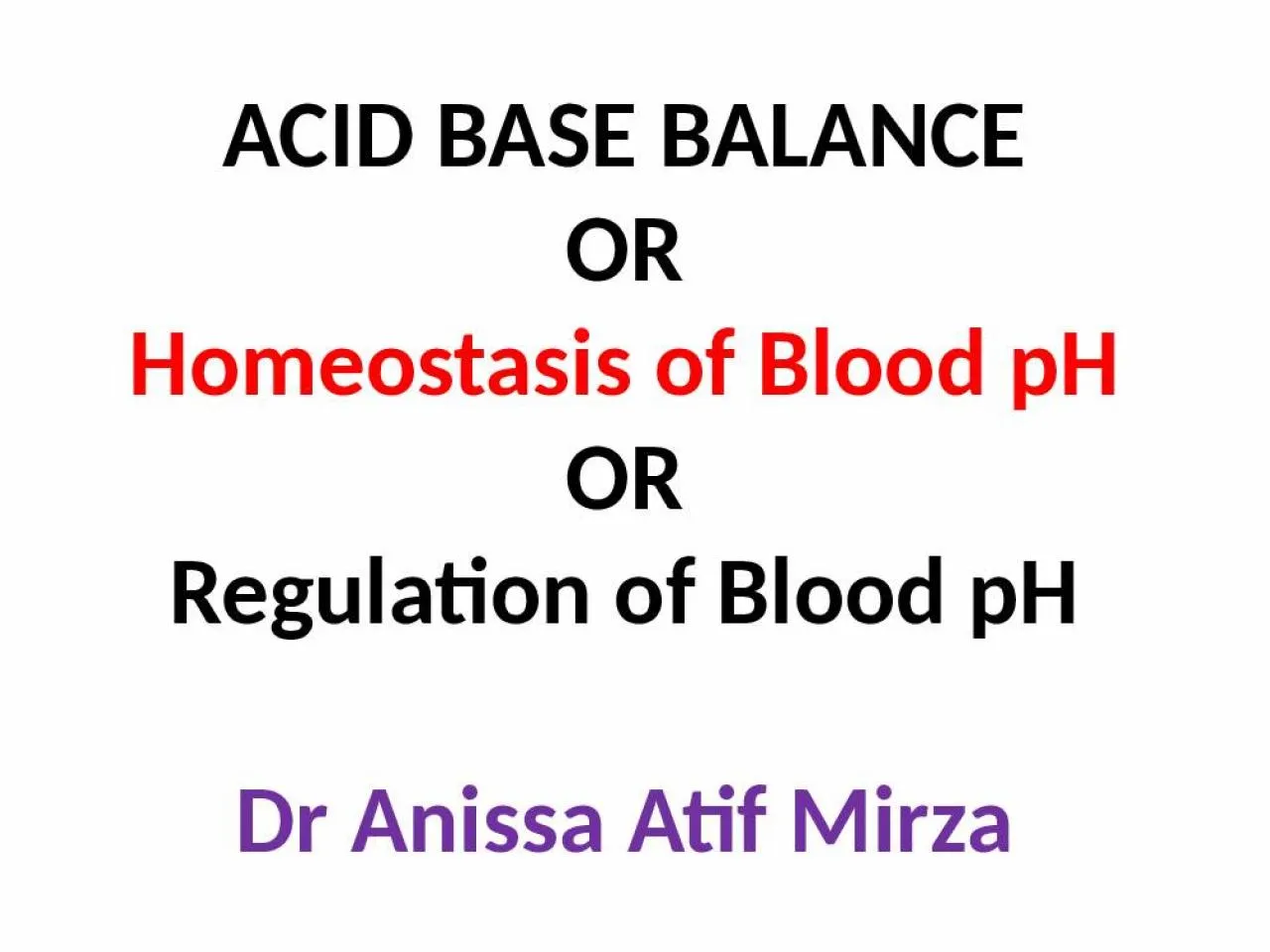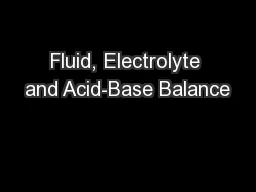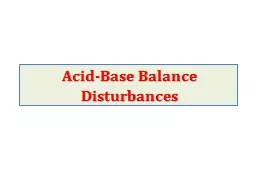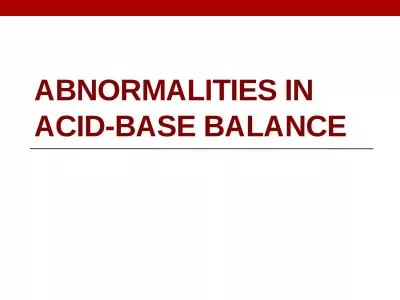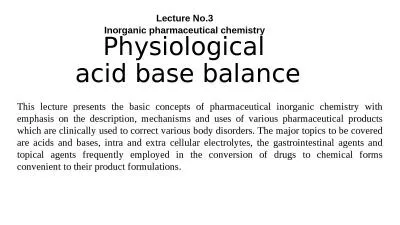PPT-ACID BASE BALANCE OR Homeostasis of Blood pH
Author : anastasia | Published Date : 2022-05-31
OR Regulation of Blood pH Dr Anissa Atif Mirza Synopsis Introduction Sources of Acids and Bases in body What is Acid Base Balance Mechanisms Regulating Blood pH
Presentation Embed Code
Download Presentation
Download Presentation The PPT/PDF document "ACID BASE BALANCE OR Homeostasis of Bloo..." is the property of its rightful owner. Permission is granted to download and print the materials on this website for personal, non-commercial use only, and to display it on your personal computer provided you do not modify the materials and that you retain all copyright notices contained in the materials. By downloading content from our website, you accept the terms of this agreement.
ACID BASE BALANCE OR Homeostasis of Blood pH: Transcript
OR Regulation of Blood pH Dr Anissa Atif Mirza Synopsis Introduction Sources of Acids and Bases in body What is Acid Base Balance Mechanisms Regulating Blood pH Significance of Maintaining Acid Base Balance. Janis Rusin APN, MSN, CPNP-AC. Pediatric Nurse Practitioner. Lurie Children’s Transport Team. Objectives. Discuss the mechanisms for maintaining normal acid-base balance. Define respiratory and metabolic acidosis and alkalosis. AP Biology. Homeostasis and the Environment. So far, we have looked at how homeostasis controls and regulates our bodies (removal of nitrogenous waste, immune system). . While these are good examples of homeostasis, they are at an organism or cellular level. . Homeostasis. Homeostasis is the maintenance of a . stable internal environment.. Homeostasis. Homeostasis represents a state of . DYNAMIC EQUILIBRIUM.. Homeostasis. Homeostasis represents a state of . The Human Body. An IRSC . L. ive Virtual Lesson. By: Diana Lenartiene, Ed. S. . The biological definition of homeostasis is “the tendency of an organism or cell to regulate its internal environment and maintain equilibrium, usually by a system of feedback controls, so as to stabilize health and functioning”. Generally, the body is in homeostasis when it’s needs are met and it’s functioning properly.. Fluid, Electrolyte, and Acid-Base Balance. 1. Body Water Content. Infants have low body fat, low bone mass, and are 73% or more water. Total water content declines throughout life. Healthy males are about 60% water; healthy females are around 50%. The Human Body. An IRSC . L. ive Virtual Lesson. By: Diana Lenartiene, Ed. S. . The biological definition of homeostasis is “the tendency of an organism or cell to regulate its internal environment and maintain equilibrium, usually by a system of feedback controls, so as to stabilize health and functioning”. Generally, the body is in homeostasis when it’s needs are met and it’s functioning properly.. homeostasis. . Cells have different functions.. Homeostasis = stable environment in your body; balance. Your body maintains its homeostasis even if outside conditions are changing. . Levels of Organization. Acids are produced continuously during normal metabolism. . (provide H+ to blood). . H. +. ion concentration of blood varies between narrow limits. . pH of the extracellular fluid = 7.35 – 7.45. Learning Objectives. Describe . what is meant by acids, bases and . buffers. List . normal pH of the body fluids. . Describe . the processes involved in maintenance of normal blood pH. .. Describe . various types of acidosis and alkalosis. stable internal environment.. Homeostasis. Homeostasis represents a state of . DYNAMIC EQUILIBRIUM.. Homeostasis. Homeostasis represents a state of . DYNAMIC EQUILIBRIUM.. . This means that adjustments are always being made to keep the variables within an . Many critical illnesses can disturb acid-base balance.. Acid-base disturbances may indicate an underlying disease or organ damage.. Accurate interpretation of acid-base disturbances requires the following:. This lecture presents the basic concepts of pharmaceutical inorganic chemistry with emphasis on the description, mechanisms and uses of various pharmaceutical products which are clinically used to correct various body disorders. The major topics to be covered are acids and bases, intra and extra cellular electrolytes, the gastrointestinal agents and topical agents frequently employed in the conversion of drugs to chemical forms convenient to their product formulations.. Kong, Q. . et al.. . “The Arabidopsis WRINKLED1 transcription factor affects . auxin. homeostasis in roots. .. ”. . Journal of Experimental Botany . (2017) . [DOI. :. . 10.1093/. jxb. /erx275. Homeostasis –. Necessary Life Functions. What defines all living organisms?. Maintain. . boundaries. Movement. Locomotion. Movement of substances. Responsiveness. Ability to sense changes & react.
Download Document
Here is the link to download the presentation.
"ACID BASE BALANCE OR Homeostasis of Blood pH"The content belongs to its owner. You may download and print it for personal use, without modification, and keep all copyright notices. By downloading, you agree to these terms.
Related Documents

